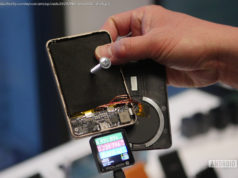And while the planet is massive, researchers say the clock may be ticking on how long it will survive.
Researchers recently discovered a strange scorching-hot planet that is only slightly cooler than our sun.
The Jupiter-like planet, KELT-9b, is tidally locked, which means it’s always showing the same face or its «dayside» to its even-hotter host star, dubbed KELT-9. The planet’s «dayside» reaches a balmy 7,800 degrees Fahrenheit, about 2,000 degrees cooler than our sun.
The side of the planet facing KELT-9 is bombarded with stellar radiation and is so hot that water, carbon dioxide and methane can’t form, according to the research led by astronomers at The Ohio State University and Vanderbilt University.
“It’s a planet by any of the typical definitions based on mass, but its atmosphere is almost certainly unlike any other planet we’ ve ever seen just because of the temperature of its day side, ” Scott Gaudi, professor of astronomy at The Ohio State University and a leader of the study, said in a statement.
And while the planet is massive, researchers say the clock may be ticking on how long it will «survive its current hellish condition, » according to the statement.
KELT-9 is nearly twice as hot as our sun, and may ultimately evaporate KELT-9b or engulf it, Keivan Stassun, a professor of physics and astronomy at Vanderbilt who directed the study said in a statement.
“KELT-9 radiates so much ultraviolet radiation that it may completely evaporate the planet, » Stassun said in a statement. «Or, if gas giant planets like KELT-9b possess solid rocky cores as some theories suggest, the planet may be boiled down to a barren rock, like Mercury.”
Researchers discovered the planet in 2014, using the Kilodegree Extremely Little Telescope (KELT) -North telescope in Winer Observatory in Arizona. The telescope spotted drop in the star’s brightness, indicating that a planet may have crossed in front of the star.
The astronomers hope to use other more powerful telescope including the Hubble Space Telescope to discover whether the planet has a cometary tail and how long KELT-9b will survive.
More coverage:
Follow Mary Bowerman on Twitter: @MaryBowerman






